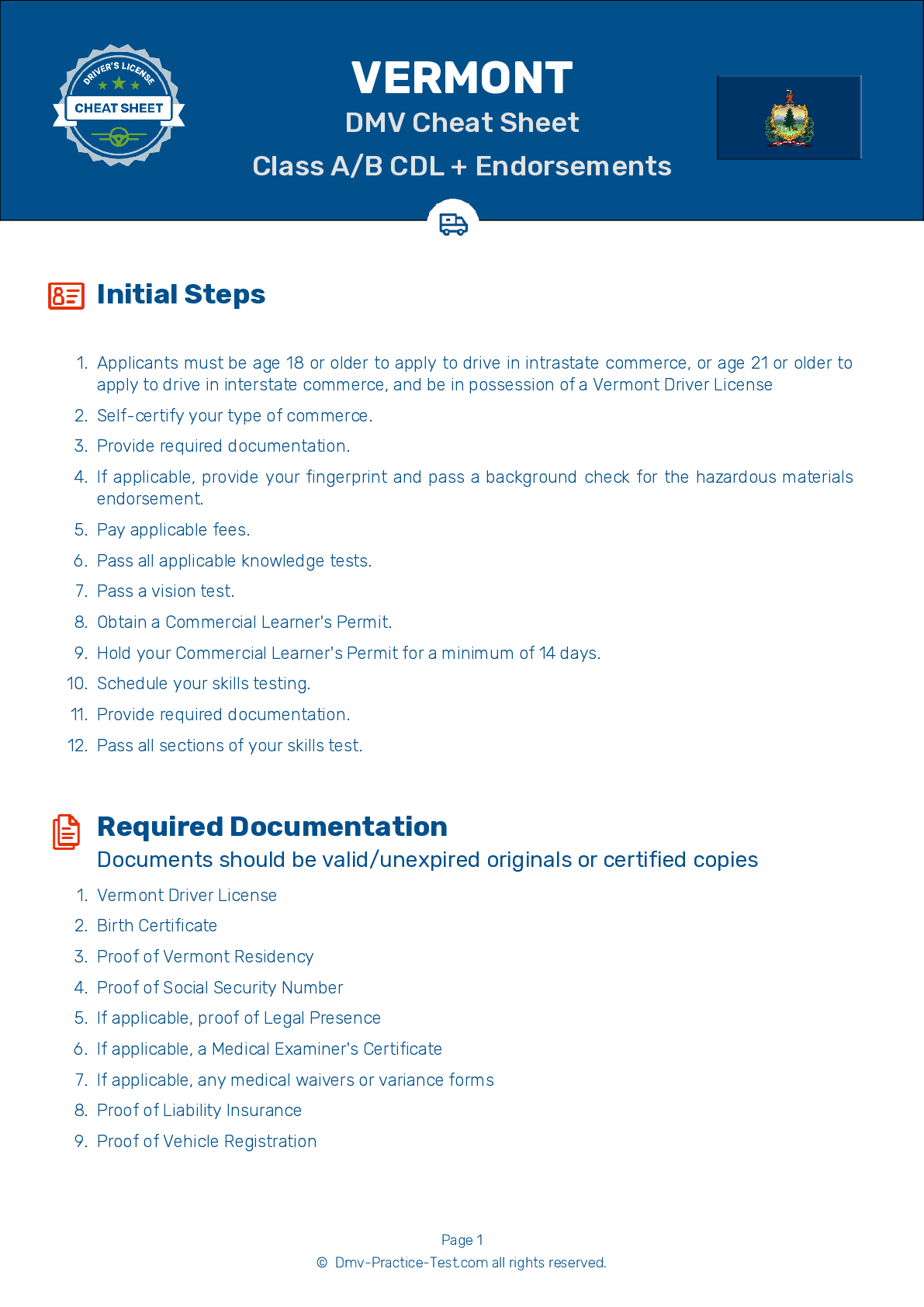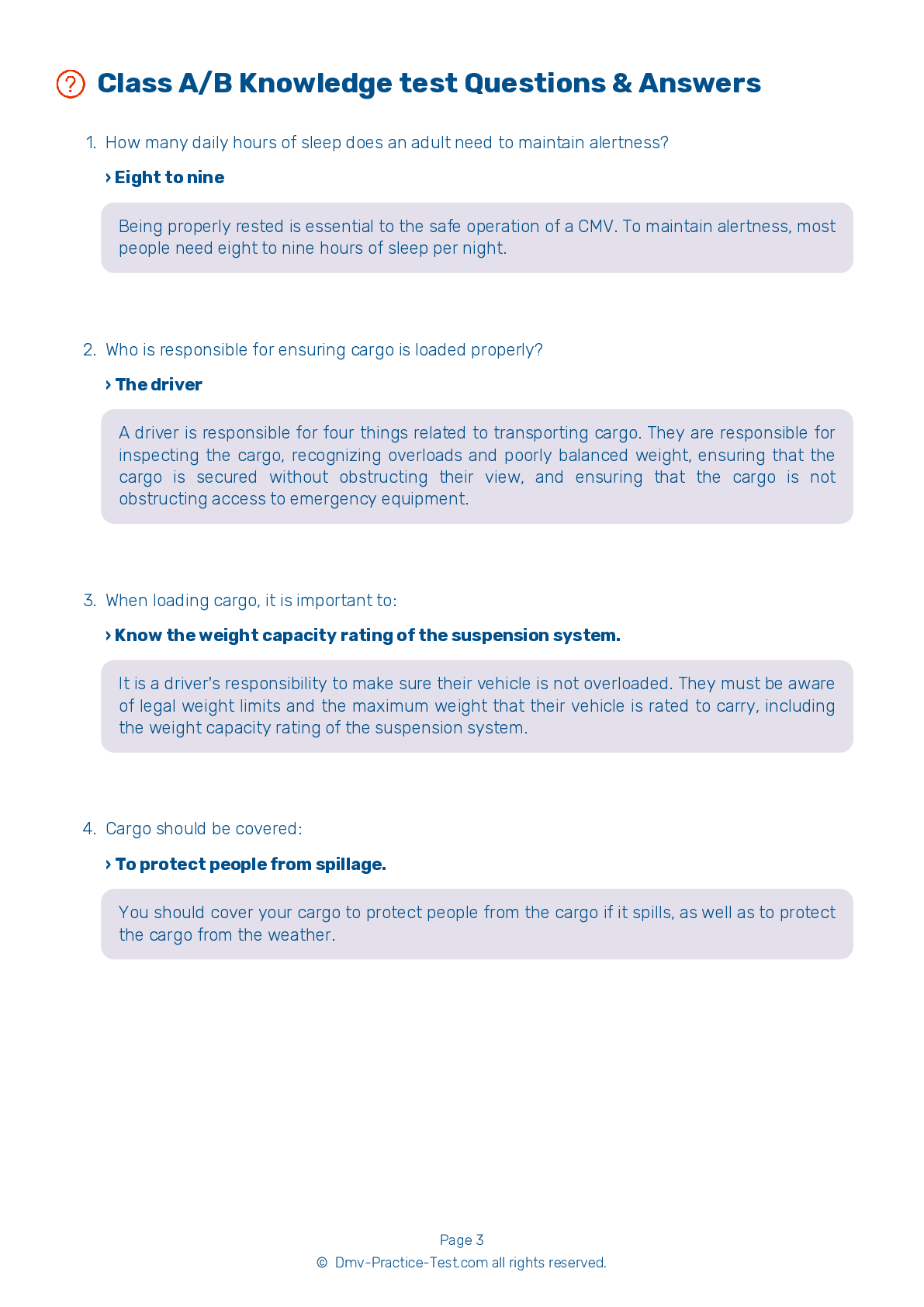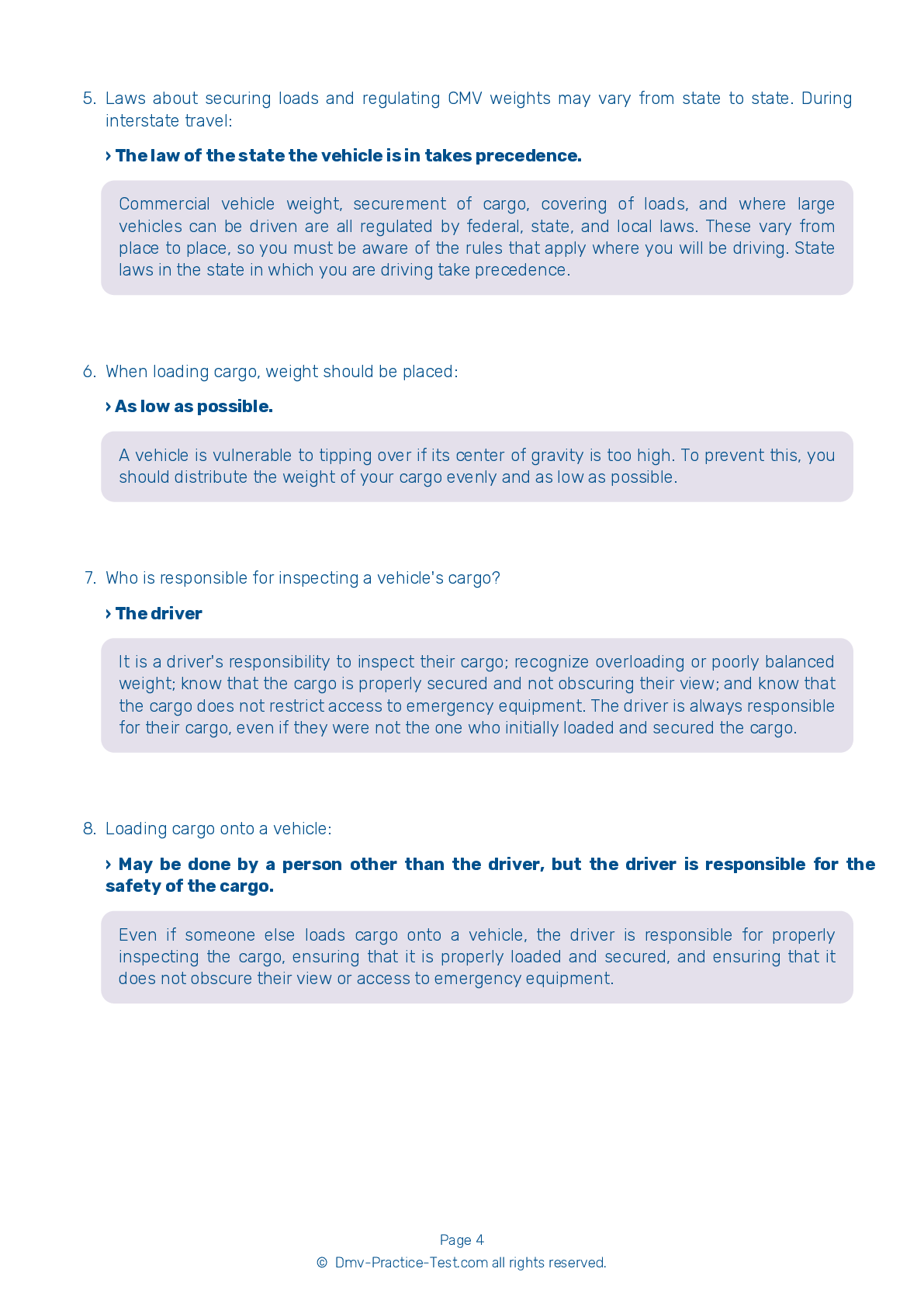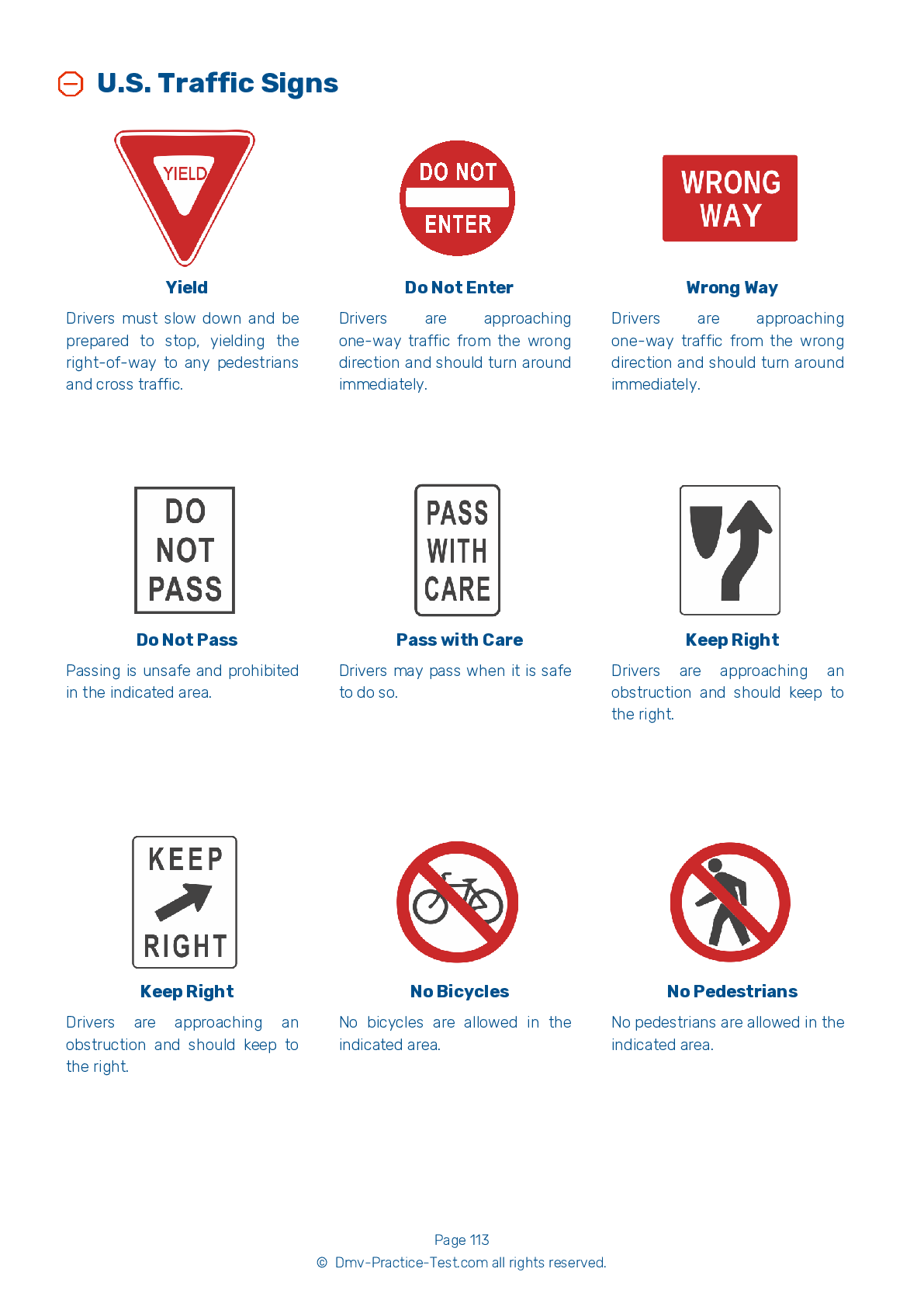Knowledge Test Class A #1
Class A Driving Test | Vermont 2025 #1 Page 3 of 7
Train for FREE online with our Vermont class A license test. The official exam test consists of several obligatory parts, with all of them checking your knowledge of different blocks of road rules. If you need to obtain a VT CDL class A permit in 2025, practice as much as possible. Free sample tests published on our website will help you check and improve your knowledge and boost your grades. Please bear in mind that CDL class A requirements may vary from state to state.
50
40
20
15 . What do the two systems of a dual air brake system share?
Both systems in a dual air brake systems share a single air compressor. If the air compressor is damaged, neither system will be able to operate properly.
16 . Most heavy trucks with manual transmissions require ____ to change gears.
Most heavy vehicles with manual transmissions require double clutching to shift gears. Learning to effectively change gears by double clutching takes practice.
17 . If convicted of a traffic violation, you must inform your employer:
If you are convicted of any traffic violations while driving any vehicle, you must notify your employer within 30 days of the conviction. This rule excludes parking violations.
18 . While still below the legal limit, a driver operating a CMV with a detectable amount of alcohol in their system will:
If you are found to have any detectable amount of alcohol in your system while operating a CMV but your blood alcohol concentration (BAC) is still below the legal limit of 0.04 percent, you will be put out-of-service for 24 hours. It is both illegal and dangerous to operate a motor vehicle while under the influence of alcohol.
19 . When turning, you should:
Be sure to activate the appropriate turn signal well in advance of a turn or lane change. Signal continuously throughout the turn and make sure to cancel the signal after the turn is completed, if your vehicle doesn't have self-canceling signals.
20 . If the coolant temperature gauge goes above the highest safe temperature, you should:
If the coolant temperature gauge goes above the highest safe temperature, you should stop driving as soon as possible and try to figure out what is wrong. There could be an issue in your vehicle that could lead to engine failure and possibly a fire.
21 . Off-ramps:
On- and off-ramps can be dangerous when driving a truck. Remember that posted speed limits for ramps may be safe for cars but too fast for trucks.
2025 Vermont | Frequently Asked Questions
A CDL Class A license in Vermont is defined as a commercial driver's license that allows the holder to operate any combination of vehicles with a Gross Vehicle Weight Rating (GVWR) of 26,001 pounds or more, provided the GVWR of the vehicle(s) being towed exceeds 10,000 pounds. This typically includes tractor-trailers and truck and trailer combinations.
A Class A CDL license in Vermont allows the holder to operate vehicles such as tractor-trailers, truck and trailer combinations, tank vehicles, livestock carriers, and flatbeds. It covers any combination of vehicles with a Gross Vehicle Weight Rating (GVWR) of 26,001 pounds or more if the towed vehicle is over 10,000 pounds.
To obtain a Class A CDL license in Vermont, you must be at least 18 years old (21 for interstate driving), have a valid driver's license, pass a vision exam, and pass the General Knowledge test. You must also pass the Combination Vehicle test and a Pre-Trip Vehicle Inspection test. Lastly, you'll need to pass a skills test in the vehicle type that fits a Class A license.
In Vermont, you must be at least 18 years old to qualify for a Class A Commercial Driver's License (CDL) for intrastate driving (within Vermont only). However, you must be at least 21 years old to drive interstate (across state lines), carry hazardous materials, or transport passengers.
Specific endorsements aren't required for a Class A CDL license in Vermont, but they can provide additional driving privileges. For instance, if you plan to haul hazardous materials, transport passengers, or drive tank vehicles or double/triple trailers, you would need to obtain the corresponding endorsements by passing specific knowledge tests.
The Class A CDL skills test in Vermont has three parts: the Vehicle Inspection Test, the Basic Vehicle Control Test, and the On-Road Driving Test. The test assesses your ability to inspect your vehicle before driving, control the vehicle during different maneuvers, and drive safely in various road and traffic conditions.
Yes, there are limitations for Class A CDL license holders in Vermont. For instance, drivers under 21 can only operate within Vermont (intrastate). Also, certain endorsements like HazMat require a driver to be at least 21. Furthermore, drivers are subject to strict blood alcohol content levels and may face severe penalties for violations.
In Vermont, the written Class A CDL test is primarily offered in English. However, some locations may offer the test in other languages. It's best to contact the local DMV office directly to inquire about language options. For non-English speakers, an interpreter service may be available but it's subject to certain rules and restrictions.
Yes, you can request accommodations for the Class A CDL written test in Vermont if you have a disability. The Vermont DMV is committed to providing equal access to all services, including testing accommodations. These may include sign language interpreters, extended testing time, or tests in alternative formats. Contact your local DMV office to discuss your specific needs.
Yes, if you don't pass the Class A CDL written test in Vermont, you can retake it. However, you must wait at least one day before retesting. There is also a retesting fee that you'll need to pay each time. It's advisable to review your study materials thoroughly before attempting the test again.



